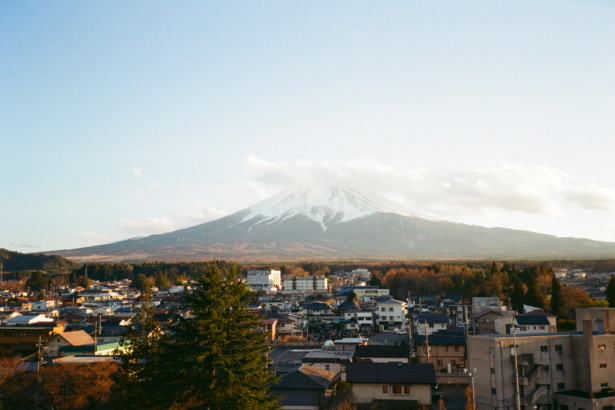Agricultural technology: fresh-keeping and extraction technology value-added agricultural products, Huadong Haoshui rice shrimp culture potential is unlimited
The Eastern Industrial Technology Service Center of the Ministry of Economic Affairs invited the Academy of Agricultural Sciences, the Food Industry Development Research Institute and other units to share technical resources, assist eastern farmers to master technological trends and production and marketing channels, and attract more than 50 agricultural practitioners to participate in the course of "n possibilities for upgrading across new knowledge industries".
Liu Fangyin, project manager of the Stone and Resources Industry Research and Development Center, explains that most of the courses are designed to meet the needs of small farmers, such as pre-shipment treatment and packaging technology for agricultural products, or testing and verification of access needs. These are all pain points for small farmers to produce and sell independently, so they provide new technical resources and consultation channels, so that farmers do not have to worry about their own brains, but seek expert assistance. In addition, the good water in Huatung also has deep potential for aquaculture development.
Biological preservation technology multi-extraction technology value-added waste
The packaging of agricultural products is not only for good-looking and good delivery, but also for maintaining freshness. The long shelf life is not only conducive to reducing freight costs, but also expanding the scope of sales. Huang Chin-cheng, director of the Technical Services and Promotion Center of the Food Industry Development Research Institute, points out that biological preservation methods have been developed in packaging materials and preservation technology. After fruit is harvested, it can be soaked in yeast solution to remove pathogenic bacteria from the skin, prolong the preservation time of fruit, make full use of microorganisms, and reduce the use of chemical additives.
In addition, the waste after processing agricultural products can also be extracted to obtain new life, Huang Chin-cheng for example, such as the mango core removed from the flesh, there is 10% oil, mango kernel oil because of the special glyceride, polyphenol content, melting point is similar to cocoa butter, has the potential to replace cocoa butter, but also can be developed into beauty products.
However, the way these new technologies are acquired and the scale of investment required are the focus of farmers 'greatest concern. Huang Jincheng said that the Food Industry Development Institute has a free Line Group Consultation Service. Farmers can leave questions, and different professionals will be mobilized to provide appropriate assistance, hoping to help them find solutions more efficiently.

(Photo/Taken from Food Institute Report Brief)
Huadong Haoshui Dahe Rice Shrimp Breeding Potential Point
"Each aquarium needs more than one large and rice shrimp, so the industry is quite promising." Lin Xuelian, director of aquatic science and technology research at the Academy of Agricultural Sciences, explains that because of its strong ability to ingest organic debris and algae, rice shrimp has become a key export commodity for functional shrimp species in Taiwan's aquariums 20 years ago. In 2006, the export volume reached 10.8 million. In recent years, due to overfishing, the export number has not exceeded 2 million. Therefore, the industry and academia are actively developing breeding technology.
Wild populations of rice shrimp live in Ilan, Hualien, Taitung, Pingtung, and other streams leading to Haikou. They are circulating shrimp species: adult shrimp will go to the sea to lay eggs, and young shrimp will return to the stream to grow. Artificial breeding technology needs to break through the two water quality requirements. Lin Hsueh-lien says that after many years of experimentation, the Institute of Fisheries Science and Technology has established a set of standard breeding procedures for large and rice shrimps. As long as the equipment is in place, the industry can produce them immediately.
Lin further points out that because Huadong is the origin of prawns, it is easy to solve the problem of water quality requirements for breeding and breeding, and it has high economic value. It is expected to become the focus of development for a single township. However, it is necessary to first cross the cost threshold of equipment and technology transfer. After that, as long as standard operating procedures are followed, it will not be a problem to produce tens of thousands of prawns per day.

(Photo/taken from the report of Institute of Aquatic Science and Technology, Academy of Agricultural Sciences)
- Prev

Transform the small town of empty houses at the foot of Mount Fuji based on old houses. HostelSARUYA
Transform the small town of empty houses at the foot of Mount Fuji based on old houses. HostelSARUYA
- Next

Application for opening up of agricultural foreign labor: lack of work can not only rely on foreign labor, agriculture in the future depends on the reduction of manpower demand
Cow breeding and outreaching agricultural services are all open items. Chen Chi-chung, chairman of the Council of Agriculture, held a press conference in Liuying District, Tainan City on the 11th to announce the good news. Dairy farmers 'applications for foreign labor were recognized
Related
- A course of planting techniques and methods on how to grow carrots
- How to plant the latest tulips?
- Is it better to pick tea in the morning or in the afternoon? When is the best time for tea to be picked? what is the third or fifth tea?
- Launch Yuanxiao Happy combination Haocha + Tea Yuan healthy Taste
- Penghu Tourism "Fireworks 20 Parade with You"
- 2022 West Lake Happiness holds "Digital Revitalization Voucher" and draws iphone13 and laptop.
- Banqiao Fuzhou social houses are designed to change start-up combined with police elimination to create a safe and livable environment
- The convenient measure of "mechanical weeding" in Xinbei has been abused and the Agriculture Bureau has imposed heavy penalties on the illegal land consolidation.
- Changgeng University Joins Hands with Four Memory Factories to Rescue Memory Talent Shortage
- The list of Taiwan's top 100 MVP managers is listed by the Director-General of the Farmers' Association of Sanxia District.

